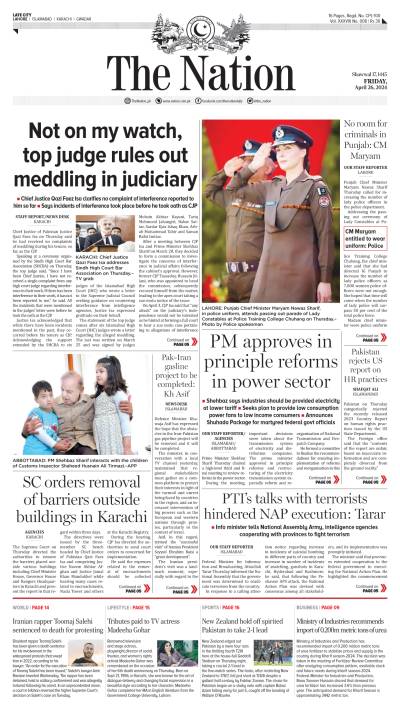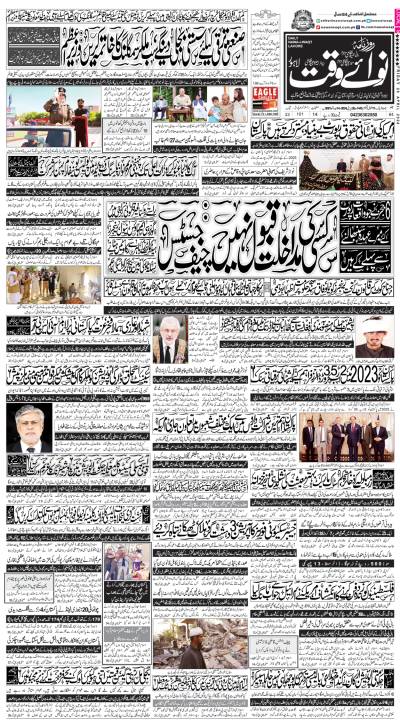Driving past rural communities during my intercity travels, I invariably look for the gaily clad crowds, colorful marquees and merry go rounds that signify a ‘Mela’ or Village Carnival. It is however often and regretfully so, that I reach my journey’s end without seeing any sign of this activity, which brings to mind the Punjabi couplet, “Kiyon Meleyan they tamboo aj dhe gai ne, kere veree sahday veray aa beh gai ne…” (Oh! why have the carnival marquees been brought down; Oh! who is the enemy that has usurped the security of our courtyard…).
For those of my generation, who have experienced the joy of strolling through rows of stalls and side shows savoring spicy snacks, the ‘Mela’ was a source of cheap recreation and fun. The highpoint of this carnival season was the Mela Chiraghan at the Shalimar Gardens in Lahore and the Industrial Exhibition at Minto Park where the Pakistan Monument now stands. Much has been written by people including myself about the aforementioned festivals, it would therefore be in the fitness of things that this week’s column be dedicated to the ‘Village Mela’, which is now almost on the verge of extinction.
My earliest memories of this event date back to the fifties. I was accompanying my father and uncle to a duck shoot near Chunian, when we spotted groups of families dressed in gaily colored clothes walking briskly towards a collection of marquees and tents decorated with buntings and flags. We halted at the spot and discovered that a ‘Mela’ was in progress to commemorate the anniversary of the local saint. The center point of this festival was a large ‘big top’ that housed the travelling circus, complete with death defying motorcycle stunts performed inside a wooden silo-like structure known as ‘maut ka kuan’ or the Well of Death. On the other side of this big tent was the theatre with its gaudy posters and a blaring loud speaker blaring out the information that the lead female (actually a male in woman’s clothing) was none other than the famous film actress ‘whatsoever her name’ and the male lead had just been offered the hero’s part by a famous filmmaker. Some distance away was a line of food stalls that sold ‘katlammay, pakoray, samosay and andrasay’. The space opposite this food park was taken up by a Merry Go Round, a rudimentary version of the Ferris-wheel and a couple of portable swings. The finishing touch to the carnival was provided by a pair of dancing horses. We could see that the event was attracting men, women and children from surrounding villages amidst a general atmosphere of gaiety and unfettered fun. There was no eve teasing, no terror threat nor any form of hooliganism and therefore no police presence in and around the area.
Even the smallest of excuses prompted the appearance of a ‘mela’. For example the weekly cattle ‘mandi’ in and around small towns and villages was livened up by a theatre, food stalls and ‘panghooras’ (a first generation wooden contraption with four seating cupolas that went round and round in the vertical plane using ‘human propulsion’). Even a prominent village wedding attracted food stalls and portable merry go rounds adding to the festivity.
I once stumbled upon a local carnival in the middle of a most unlikely place – the Cholistan Desert. As my vehicle approached a cluster of thatch roofed mud houses, I heard bag pipe music floating up from behind a nearby sand dune. Curiosity prompted me to come upon two food stalls selling ‘pakoras’ and a strange looking sweet confection. I also saw some hand pushed carts offering colorful ladies’ jewelry, hair clips and ‘parandas’, while a mini merry go round did brisk business with a screaming group of brats. I was told that this ‘mela’ was to celebrate the departure of a young man to Dubai.
The nationwide advent of television, underground video theatres, video game parlors, snooker clubs and their proliferation into our rural communities has brought about a radical change in lifestyles. It now appears that the day of the ‘ Village Mela’ is over. Mercifully, large scale festivals like the ‘Mela Chiraghan’ are all but keeping our cultural heritage alive, but judging by trends even this great celebration may be at risk.
The writer belongs to a very old and established family of the Walled City. His forte is the study of History.
Saturday, April 27, 2024
Save the ‘Mela’
The writer is a historian
All set for 5-day polio vaccination campaign
April 27, 2024
Three killed by lightning strike in Mansehra
April 27, 2024
Seven tubewells of WSSP converted to solar power
April 27, 2024
SCCI chief for simplifying arms export procedure
April 27, 2024
Political Tightropes
April 27, 2024
Wave of Revolution
April 27, 2024
Brave Peacekeepers
April 27, 2024
Economic Challenges
April 26, 2024
No Compromise
April 26, 2024
Korangi’s challenge
April 27, 2024
US double standard
April 27, 2024
Political turmoil
April 27, 2024
Photon power
April 26, 2024
Justice prevails
April 26, 2024
ePaper - Nawaiwaqt
Advertisement
Nawaiwaqt Group | Copyright © 2024





